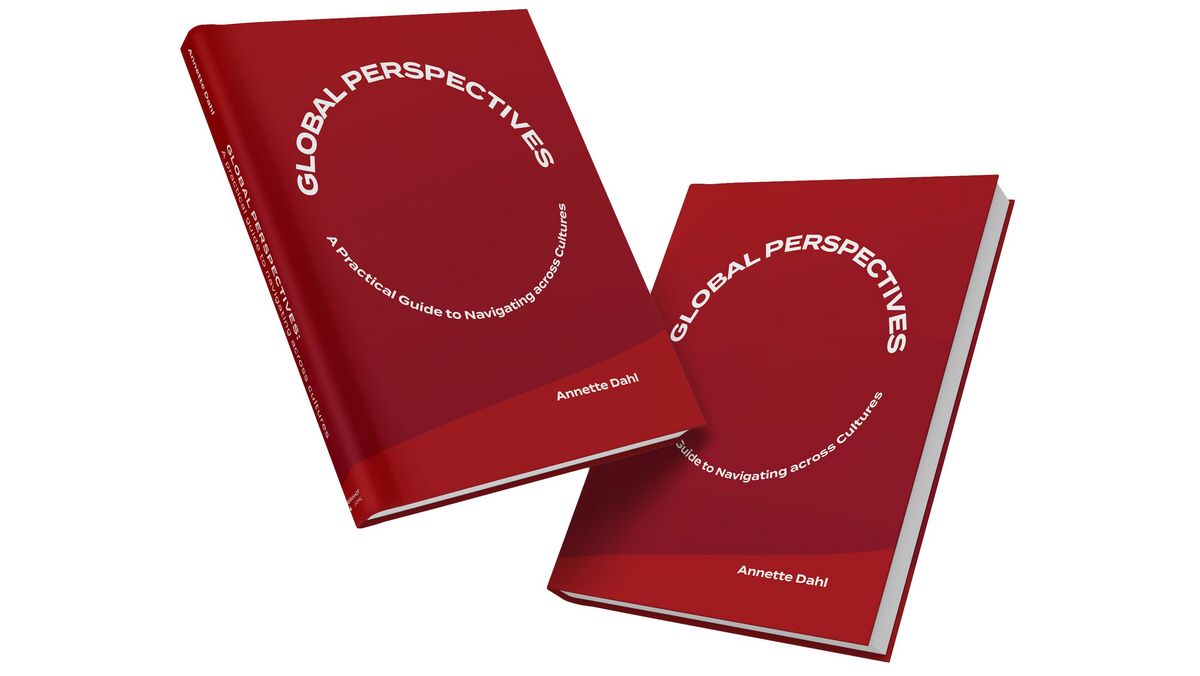
How to Become Culturally Intelligent: 5 Good Books to Start With
Is working across cultures part of your business day?
If it is, you’ll certainly achieve more if you are culturally intelligent.
You’ll waste less time. You’ll enjoy more effective collaboration with your global colleagues and partners. And you’ll be better able to take advantage of the possibilities that lie in cultural differences.
Here are 5 books we recommend that will help you develop – or perhaps sharpen – your cultural intelligence.
1. CI: Cultural Intelligence - The art of leading cultural complexity (2008) – by Elisabeth Plum (main author)
If you only want to read one book about cultural intelligence, it should be "CI: Cultural Intelligence". Elisabeth Plum is the main author, and Bendikte Achen, Inger Dræby and Iben Jensen are co-authors.
It was Plum who introduced the phrase “cultural intelligence (CI)” to Denmark with the first edition of this book in 2007. Since then, the book has been a constant companion for us at C3. Cultural intelligence is for Plum "the ability to create a fruitful collaboration with people who think and act differently from you".
Cultural intelligence has three dimensions:
- Intercultural engagement is about how motivated you are to meet and get to know people of a different cultural background. Curiosity is a key word here.
- Intercultural understanding requires that you understand your own cultural background, that you know something about your global colleagues’ background, and that you understand how cultural differences affect your collaboration.
- Intercultural communication are the specific actions you take when you meet people with a different cultural background, and your ability to adjust your actions so they improve your collaboration.
The three dimensions work together and are equally important. It’s not particularly useful if you know a lot about Indian culture, for example, if you don’t know how to use that knowledge to communicate effectively with your Indian colleague.
As Plum sees it (and we at C3 agree), culture is not just national culture. There are also industry cultures and corporate cultures. There is a culture based on what family you grew up in and what hobbies you have.
In short, culture is communities that are created between people. And since most of us are a part of many communities, we’re also a part of many cultures. Which of our “cultural identities” has significance in our work life can differ from situation to situation.
In the start of the book, Plum explains her understanding of culture and cultural intelligence. What follows is a series of theme chapters that focus on industry cultures, mergers, collaboration across national borders and ethnic differences in Danish workplaces.
Plum and her three co-authors have years of research and practical experience with cultural differences. This experience comes into play in the theme chapters, which are full of specific cases and practical methods for developing cultural intelligence that can be used right away.
The authors are all Danish and most of the cases are sourced from Danish companies or companies based in Denmark. But even if you have nothing to do with Denmark, we can still recommend the book, since it contains lots of useful knowledge and practical advice you can use in any cross-cultural situation.
This book was originally published in Danish under the title "KI: Kulturel Intelligens" (2007).
2. Samarbejde lokalt og globalt: Forskelle er vitale (2013) – by Elisabeth Plum
Since we at C3 are big fans of Elisabeth Plum, we’d like to mention another of her books here: "Samarbejde lokalt og globalt: Forskelle er vitale" (Unfortunately, the book is only available in Danish).
The basis is again cultural intelligence, as Plum described in her book "CI: Cultural Intelligence". But here the focus is different: How can we use cultural intelligence to do more than just tackle the challenges cultural differences can create? How can we actually make the differences an advantage?
The common theme throughout the book is collaboration. Collaboration across organizational silos. Collaboration in cross-functional teams. Collaboration in global teams.
According to Plum, there is great unexploited potential in cultural differences. These differences can be used to create new knowledge, improve processes and create new products. But that requires that managers and employees in your organization understand the differences and are bold enough to talk about them. Only then can they be used as a resource.
A classic example is the Danish-based company that has subsidiaries all over the world. At the Danish HQ the company is seen as global, even though the culture in the headquarters is actually very Danish. That means it’s missing out on useful input from local subsidiaries that could be used for growth and development.
This book is also full of cases, practical tools and questions to reflect on. If you’d like to take advantage of the differences in your cross-disciplinary teams, global project groups or in different parts of your organization, there’s plenty of inspiration here.
3. The Culture Map: Breaking Through the Invisible Boundaries of Global Business (2014) – by Erin Meyer
Erin Meyer, who is connected to the international business school INSEAD, grew up in the USA, married a French national, and has lived and worked in the USA, Europa and Africa. She has studied business cultures all over the world.
Based on this background, she launched the book "The Culture Map: Breaking Through the Invisible Boundaries of Global Business", introducing a model that makes it easier to navigate through intercultural collaboration.
The focus here is on national culture. Meyers’ model has eight scales, which various countries’ cultures are placed on. The scales show how people in the specific country usually act when they are:
- communicating
- evaluating
- leading
- deciding
- trusting
- disagreeing
- scheduling
- persuading
This way you can compare preferences in your own culture with those in your global business partner’s culture and pay attention to which similarities and differences are there. This knowledge is invaluable in almost all cross-cultural work situations.
Meyer combines the model with small stories about typical misunderstandings in global collaboration. Many of them build on the author’s own experience. She analyzes what went wrong, and offers practical advice on how misunderstandings can be avoided.
"The Culture Map" is far from the first book that puts the countries of the world on scales in which you can compare their cultural preferences. But at C3, this book is our absolute favourite.
Meyer's model is analytically sharp, very nuanced, and easy to use. The book is based on research without being too heavy on theory. The case stories are honest and educational. And the book is so well-written that you can have the pleasure of reading it from one end to the other (and if you don’t have the time for that, it can also be used as a reference book).
As an extra plus, "The Culture Map" works well with C3’s own 4R-model, since many of the cultural scales overlap with our own 4 R's: Rank, Responsibility, Risk & Relationship. (If you don’t know our 4R model, you can read more about it in this article).
With Meyer’s book in your bag and our 4R model in the back of your mind you will be well-prepared for any cross-cultural assignment or challenge you may be facing!
4. Expand Your Borders: Discover Ten Cultural Clusters (2013) – by David Livermore
David Livermore is also one of our favourites at C3. Livermore is an expert in global leadership and cultural intelligence, and he is the head of The Cultural Intelligence Center, which works with the assessment and development of cultural intelligence.
Livermore defines cultural intelligence (CQ) as "the capability to relate and work effectively in culturally diverse situations".
According to Livermore, a culturally-intelligent person will have skills within:
- CQ Drive: Your interest, drive, and confidence to adapt to multicultural situations
- CQ Knowledge: Your understanding about how cultures are similar and different
- CQ Strategy: Your awareness and ability to plan for multicultural interactions
- CQ Action: Your ability to adapt when relating and working interculturally
Livermore has written a number of books about how you work and lead effectively on a global basis. In "Expand Your Borders: Discover Ten Cultural Clusters" the focus is on CQ Knowledge: The book gives you an understanding of cultural similarities and differences around the world.
The build-up is simple: Livermore uses 10 chapters to go through the 10 “cultural clusters” the world’s countries and cultures can be divided into: for example, Northern Europe, Latin America, and South Asia.
For each cluster, he outlines the historical background, the most important cultural dimensions, and the most important differences within the cluster. And then he offers practical tips on how to work well with people from the individual clusters.
The book is short – only 100 pages – so Livermore paints with a broad brush. That means the book should be used carefully, as the writer himself emphasizes.
In the introduction, Livermore explains how he once avoided making general descriptions of cultures. In real life, the cultures of the world are endlessly complex and every individual is unique. Livermore didn’t want to oversimplify things and reinforce cultural stereotypes.
The problem is that sometimes people have a need for general descriptions.
Maybe you’ve never had anything to do with other cultures before, but you’ve suddenly become responsible for customer contacts all over the world. You need a lightning-fast overview of the key differences between your culture and your customers’ cultures, so you don’t begin your collaboration with the most typical cultural pitfalls.
Is Livermore’s book an exhaustive description of the world’s people and cultures? No, not at all.
Will you meet exceptions in the real world that don’t match the book’s descriptions? Yes, lots of them.
Will you become culturally intelligent when you have finished the book? No, much more is required.
Take the book for what it is: a place to begin if you are going to be working with colleagues or business partners from around the world, but don’t have the time to go into depth with various cultures.
5. The Art of Managing Remote Teams (2014) – a series of eBooks by Hugo Messer and others
Our last recommendation is actually an entire series of eBooks within the area "The Art of Managing Remote Teams". The series is relevant for those of you who work with employees, colleagues or partners from a distance.
The series' six short books focus on these questions:
- How to get prepared for managing a remote team?
- How to organize nearshore and offshore collaboration?
- How to overcome cultural differences when managing offshore/nearshore teams?
- How to communicate effectively with a remote team?
The series is collected by Hugo Messer, who has comprehensive experience with offshoring/nearshoring and virtual collaboration.
When Messer was looking for books on the topic, most of what he found was too theoretical. That’s why he decided to write a book series full of practical advice.
Each book contains articles from 3-5 writers from various places in the world, all of whom have a great deal of hands-on experience they are happy to share.
For example Thomas Tøth, who is an expert on offshoring within the IT industry, contributes an insightful article on how to get collaboration to work in teams spread across borders and time zones.
The book series was written as a crowdsourcing project, so very little time was used on editing, set-up, etc. But on the other hand, all of the articles can be read separately.
So if you need quick and practical advice on how to plan your offshore project, for example, or how to start up your virtual team, you can get help from this series.
Get our full list of recommended books
Have you developed an appetite for more books that can strengthen your cultural intelligence?
Then you might enjoy the full list of 15 books we recommend on topics like cultural understanding, global leadership, global teams, diversity and inclusion.
Just email us at kontakt@c3consulting.dk and write a couple of words on why you are interested in the list. We’ll be happy to mail it to you.
Would you like to strengthen the cultural intelligence in your organization?
- Read here how we can help tailor workshops and training processes
- See examples of assignments we have carried out for our clients
- For more inspiration on how to strengthen your cultural intelligence, follow us on LinkedIn or sign up for our newsletter using the form below

